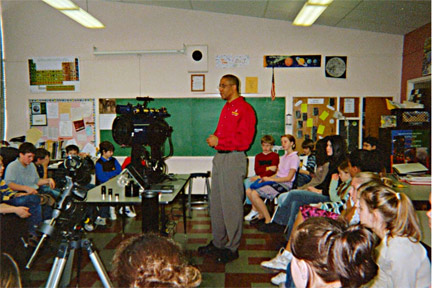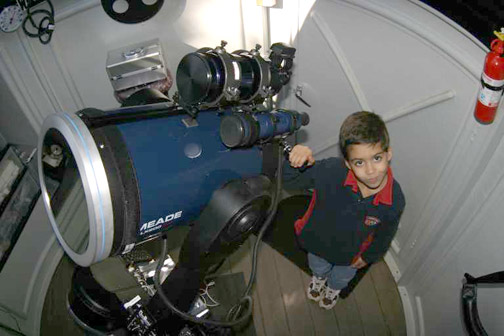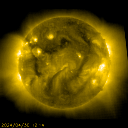|
|
An amateur astronomer, Marcus Thompson from Fairless Hills, Pa., wanted
to share his interest with others and decided to begin visiting schools
in the area. He describes what he does on these visits and gives tips
on what he has learned.
Like many who love astronomy it was my first view through a telescope
as a young child that sparked my interest. Seeing the rings of Saturn
caused my jaw to drop as my mouth uttered a raspy wow! It's the same
for kids... and most adults. Their first view a of celestial object,
the Rings of Saturn, the Great Red Spot on Jupiter, craters on the Moon
or a sunspot produce the same reaction: wonder and awe.
|
 |
|
Most of these sessions are done during daytime so the Sun is a great
object to use for the observing session. Just be sure to securely
attach the solar filter to telescope, remove the finder scope and
instruct the teacher to help keep an eye on filter and the kids. You
may be able to include the Moon as well in your daytime viewing
session.
A good size class is about 13 to 30 children. During the time allotted
you may want to give the kids a basic idea of how a telescope works and
explain what its major parts are. You do have to gear the presentation
toward the age group you're taking to. Use as many props as you can:
eyepieces, finder scopes, binoculars etc. One of my props is an old
department store Newtonian telescope with all the screws removed so the
telescope can quickly be disassembled and the mirror and vane can be
easily shown to the kids. It's a great tool to use to explain
telescope basics. Kids love visual things, so bring in your own
pictures. Another tip: go to your local bookstore and find a kids'
astronomy book. At the end of the session show them the book, tell
them where you got it and its cost. They can get one if they are
really interested.But a presentation doesn't have to be just about
telescopes. Remind the class that astronomy doesn't require a telescope
- there is a lot to see with the two most important optical tools they already possess. And once they learn the sky, they'll never be lost. Astronomy is something they can do alone or with friends for the rest of their lives. Be prepared for questions, kids ask a lot of them. Some of the things they may say will catch you off guard. I remember talking about constellations to a class, I was talking about circumpolar stars and ask if anyone knew a star you can see any time of year. The most common answer and the one I was expecting was Polaris, the North Star: the answer I got was our Sun! At least they were paying attention! |
 |
|
Thompson also has a small observatory on his backyard with a 10" Schmidt-Cassegrain (LX200GPS) scope capable of viewing most of the planets and most bright deep space objects. He does not have groups there as it is quite small. Because of light pollution, he uses it mostly for solar (white light), lunar and bright planetary objects. And that led him directly to solar observation. He explains, "I also own a small 40mm Hydrogen-Alpha telescope for solar viewing only that is piggy backed on the 10" SCT. When folks take a look through the HA scope and see the granularity of the Sun's surface and the prominences on the limb, they are blown away." When asked about SOHO, he says "I use the SOHO images pretty regularly. When my local weather is not cooperative, I use the SOHO images to see what I am missing. And SOHO's instruments provide me with views of the Sun I could never see with my equipment no matter how good the weather! I sometimes leave teachers a list of URLs with educational topics they can use. The SOHO site is on that list. SOHO does a very good job of providing educational information on their site." During the day Marcus Thompson is employed as Spacecraft Systems Engineer for Lockheed Martin. Besides being involved in astronomy outreach, he also spends time talking to kids about how spacecraft are built and what they do. As a hobby he owns and operates a small private observatory in Fairless Hills Pa. You can contact him at marcus[at]jatobservatory.org. |
|




